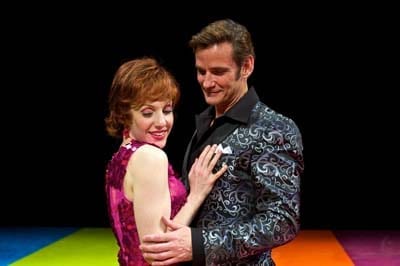 SALT LAKE CITY— “If I could just fix this, then I’d be happy.” “If I could just change that, then I would like my body.” As women, we all know there are things we would like to change about our bodies. Things we would like to fix or replace. Things we obsess over. Things that make us feel ugly and insecure.
SALT LAKE CITY— “If I could just fix this, then I’d be happy.” “If I could just change that, then I would like my body.” As women, we all know there are things we would like to change about our bodies. Things we would like to fix or replace. Things we obsess over. Things that make us feel ugly and insecure.
Eve Ensler, author of The Vagina Monologues takes on this battle in her recent play, The Good Body, now showing at the Rose Wagner Center for the Performing Arts in Salt Lake. In the show Eve, played by Kathryn Atwood, candidly takes on her worst enemy: her stomach. According to the play, the term “good” has morphed into meaning beautiful; skinny; perfect. The three-woman play follows Eve on her journey to “fix” herself and become “good.”
Through a series of short monologues we are introduced to a variety of characters as Eve visits fat camp, clinics and gyms around the world. In each situation, the women she meets each express dissatisfaction with one part of their body or another. They are always working to pinch this, raise that, lose this or suck out that. Although Eve has traveled the world, she has seen none of it. In India, her friend, Priya, points out that in all her travels she has been looking down, at her stomach. “You are missing the rest of the world. You need to look up. You need to look out.” For the first time, Eve entertains the idea that maybe, just maybe there is nothing wrong; nothing that needs to be “fixed.” What started as a journey to “fix” her body turned into a journey to “love” her body in all its round glory.
Kathryn Atwood takes on the precarious yet brazen role of Eve, the narrator. Atwood candidly and somewhat shamefully reveals her obsession with her “imperfect” body, even lifting up her shirt to show us the problem area. She takes the audience into her confidence and exposes her weaknesses and insecurities, as if we were privy to the details in her diary. Cassandra Stokes-Wylie and Tamara Johnson- Howell each take on several roles, portraying all of the characters Eve meets on her journey. It was impressive how easily the two slipped in and out of the different roles. Stokes-Wylie depicted the sensitive situations of many women while maintaining a certain sense of dignity. Johnson-Howell was able to flawlessly slip in and out of accents, putting a burst of energy into the character and making it believable.
The simple set allowed the focus to remain on the message, rather than the presentation. The set consisted of three benches surrounded by scenes portraying images of women’s bodies, in all their shapes and sizes. The actors all dressed in black, adding props to their costumes, such as a scarf or robe, to signifying the changing characters. Despite the basic background, Director Robin Wilks-Dunn’s attention to detail was impressive. Props, such as an exercise ball or piercing station, were brought on stage, creating a notably different feel for each scene, although the set remained the same. Even the small details were not overlooked as one woman smoked on stage, and bowls filled with ice cream were served.
My only criticism is the crude language and content, which permeated the show and made me cringe and squirm uncomfortably in my seat. Four-letter-words frequented the script. The message could have been conveyed without the language. The play also contains several provocative scenes which are not suitable for children.
Before attending the play I read a brief overview to get a feel for the show. I was excited to see how it would address the issue and bring about a change. Throughout the show I thought about all of my physical insecurities, yet as I walked out I realized just how frivolous they were. The Good Body highlights the step that all women should take, the step towards not only accepting, but also loving their bodies. For “our body is our home. We live in a good body.”




